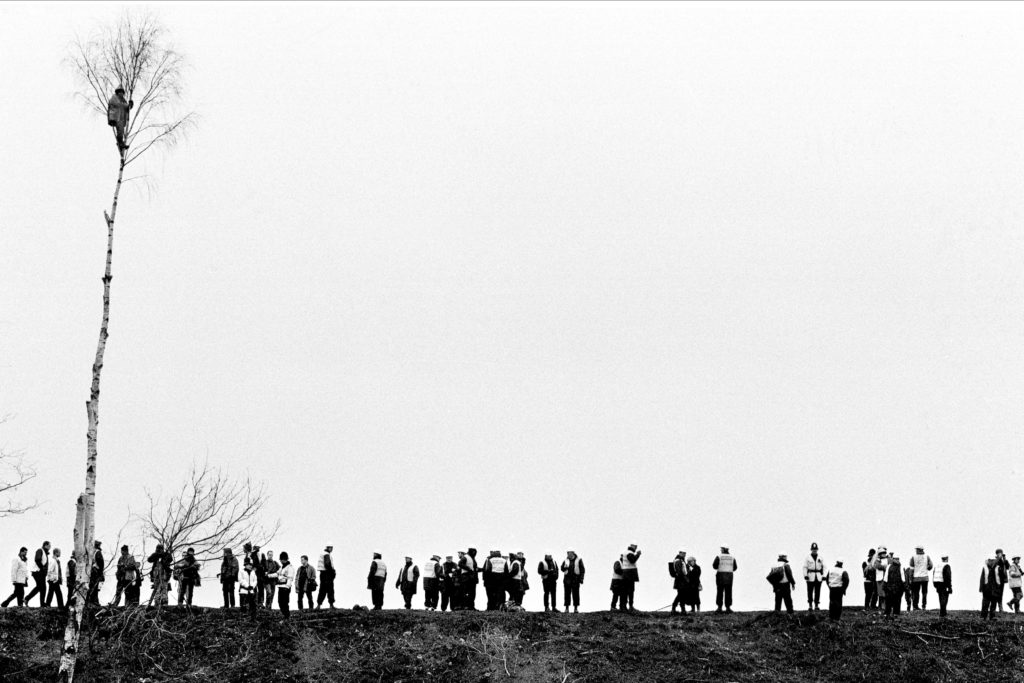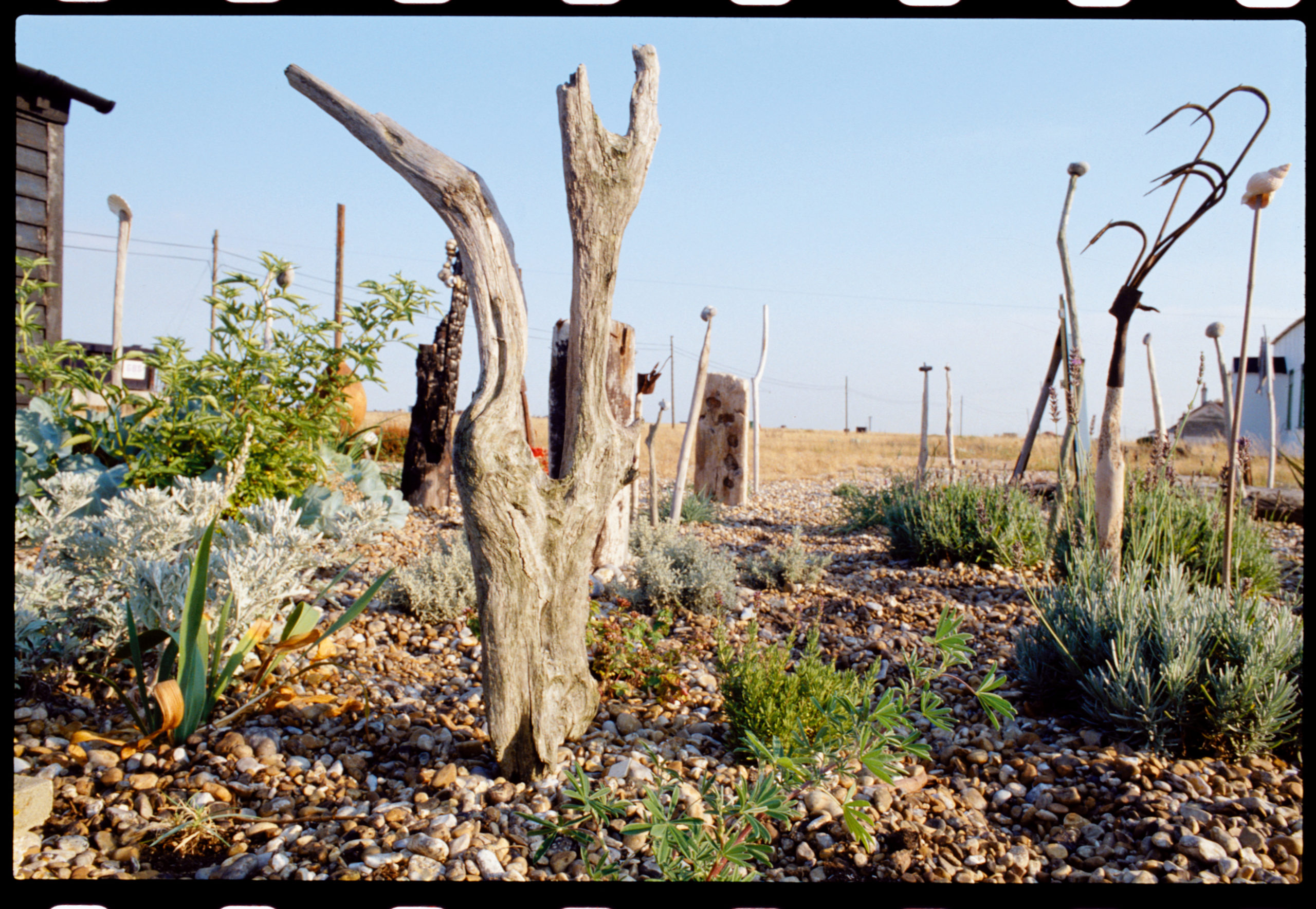Radical Landscapes – William Morris Gallery, London
The Tate co-organised exhibition Radical Landscapes moves to the William Morris Gallery, bringing with it new connections and meaning.

Lead image: Derek Jarman, The Garden, courtesy & © Basilisk Communications.
Radical Landscapes
Landscapes are not neutral. This is the central thesis of Radical Landscapes. Instead, the exhibition suggests, landscapes are a contested space in life as in art. Radical Landscapes is all about how we view, read, and access landscapes. And also about how they have been focal points of protest on a range of issues. First seen at Tate Liverpool in 2022, the exhibition is now at the William Morris Gallery through 18 February 2024.
Over 60 works by various artists who have lived and/or worked in Britain are included. They range from painting to photography, film, print-making and of course land art. Archival documentation supplements the artworks, relating to movements and protests from the Kinder Scout Mass Trespass to Greenham Common to anti-road protests at Newbury. New commissions include a recording of the sounds of Epping Forest, an interactive rewilding game based at Langthorne Park, and a series of portraits of Windrush Generation allotment holders across Waltham Forest. This reworked version of the exhibition may have a smaller footprint than its Tate counterpart, but there is no doubting that it packs a punch.
And, importantly for an exhibition about our response to the natural world, it has a strong sense of place. An important new element of Radical Landscapes in its Walthamstow home is a connection back to local places and people. This includes some of the new commissions I’ve mentioned above. And also a site-specific theme, News from Nowhere, linking us back to William Morris (in whose childhood home we find ourselves).

England’s Green And Pleasant Land?
Broadly speaking, Radical Landscapes is a project of two halves. The first, which takes place in the museum, uses art and archives to educate and, dare I say it: radicalise. The second takes its now politically-awakened subjects beyond the gallery walls, encouraging engagement with activities offered by various local community groups as well as the William Morris Gallery itself.
The first half is done effectively. The artworks do seem to have been pruned (couldn’t resist) since the exhibition’s first iteration, yet each is well-chosen. The first room very sharply dispels the notion that landscapes are a safe, neutral genre. The curators bring together a diverse range of artists to show how political landscape is and always has been. Who land belongs to, who has shaped a particular landscape, who has access, and who is welcome. Deeply political questions explored by artists including Aubrey Williams, Richard Long, Jo Spence and Jeremy Deller. Derek Jarman takes refuge in his desolate Dungeness garden. Peter Kennard interrogates our sense of identity by placing nuclear missiles into Constable’s Haywain. Speaking of early landscape painters, original works by Gainsborough and Turner, as well as commentary by John Berger, disrupt the idea that landscape painting was ever anything other than political.
After a transitional space where we see Abel Holsborough’s newly-commissioned series Small Things are Possible, photos by Claude Cahun, and footage of 90s rave culture and 80s Neo-Naturists, we head upstairs. Here the focus is more explicitly on protest and environmental concerns. Thalia Campbell’s banner from Greenham Common shares the space with images by various artists of protest movements, camps, and marches. A reminder of what these actions have won us (like our National Parks). But also some of the things we’ve lost. Certainly good preparation to move outside the gallery and engage with some of the extensive programme of events organised in collaboration with local artists, community organisations and partners. Soundscapes, walks, open days, film screenings, workshops and performances continue are scheduled until the exhibition’s close in February next year (albeit with a sizeable gap over Christmas).

News From Nowhere
Perhaps my favourite space in Radical Landscapes was the room entitled News from Nowhere. This was also the title of an 1890 work by William Morris, and thus ties the exhibition and its hosting institution together. News from Nowhere (the book) is a peculiar work. It’s a socialist utopian novel whose vision of the future looks to the past. Just as Morris yearned for elements of the past he felt were disappearing in industrialised society, his protagonist William Guest is ultimately pleased to find himself in a rural idyll in which people find happiness in nature and their work, and there’s no private property, cities, money, authority or class system.
Within Radical Landscapes, the News from Nowhere theme is about Waltham Forest’s rural past and its impact on Morris’s beliefs. Morris grew up on the edge of Epping Forest, whose soundscape, recorded by Eric King, plays here as a backdrop. He moved to Water House, today’s William Morris Gallery, aged 11. At the time this was rural Essex, until massive Victorian expansion started to replace green spaces with terraced housing. Morris very much lamented the loss.
The News from Nowhere space within the exhibition brings to life the Waltham Forest of the past through a display of historic objects: Neolithic hand axes rub shoulders with old farm machinery, images of the rural places that once were, and some of Morris’s own nature-inspired designs. Archival materials from link road protests and residents’ associations draw a thread between Morris and the continuing struggle of residents through the decades to preserve access to nature and clean air and water. It works exceptionally well to tie the permanent and temporary displays together and make this exhibition, which is all about place, local.

Final Thoughts On Radical Landscapes
I’ve reflected before on how interesting the different forms that an exhibition takes in different locations can be. Each institution tends to put its own mark on what is, on the surface, the same thing. I didn’t see Radical Landscapes when it was at Tate Liverpool but, from what I’ve read, I think the changes have contributed positively to the experience of the exhibition in its new home. The messages of activism and engagement have an outlet in the programme of activities outside the gallery’s walls. More than just a contemplation of Britain’s land, environment and climate activism, it becomes a call to arms for viewers to get engaged themselves and become part of a movement and tradition of connection through place stretching back generations.
It’s rare to see an exhibition which attempts such an impact. And rarer for such an exhibition to contain top-notch artworks from such a broad and diverse swathe of British art. It’s an exhibition which tells us about who we are as well as where we live.
I urge Waltham Forest residents and other Londoners to see Radical Landscapes. Whether or not you choose to go beyond the art on view, this is the sort of exhibition which deserves our time and support. Even better, it is free. Though those who can may wish to pay the suggested donation, ensuring continued access to quality arts and culture for those who can’t. If being out in nature is more your style, you can take some inspiration from Richard Long and go wandering. There’s even an exhibition Spotify playlist to accompany you. One way or another, Radical Landscapes provides fertile ground for inspiration, education, and connection
Salterton Arts Review’s rating: 4/5
Radical Landscapes on until 18 February 2024
If you see this after your page is loaded completely, leafletJS files are missing.

